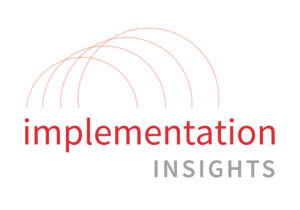
Marvin Smith, Stakeholder Outreach Manager, SASB
SASB standards have been downloaded over 100,000 times since they were approved in November 2018, one of many indications that companies are looking at the standards with fresh eyes and considering next steps. Even in the best of circumstances, adjusting to a new reporting framework can cause growing pains. It’s like a software update on your phone: even that cool new feature takes some getting used to. When you’re implementing process shifts at your organisation, it often takes experimentation to refine them—which is why most companies using SASB aligned their disclosures with our standards over time, not overnight. While we’ve seen some companies begin with fully or near fully aligned SASB reports, that route may not be practical for all companies. An iterative approach can be a strategic path for companies to access the benefits of the SASB standards. Even when it is achieved gradually, improved sustainability reporting creates space for companies to better understand and respond to investor needs, reflect on company and competitor performance, and identify opportunities for innovation.
Early adopters have already begun to see the benefits of a staged approach. Our most recent case study from Gap Inc. illustrates how the apparel giant has leveraged SASB to enhance its sustainability disclosures. Although it has published corporate responsibility reports for over a decade, 2017 marked Gap Inc.’s first disclosure using SASB’s Apparel, Accessories & Footwear industry standard. The fact that the standards are market-informed and focused on financially material issues means that aligning Gap Inc.’s reporting processes with SASB provides not only decision-useful information for investors, but key business intelligence that drives performance improvements at Gap Inc. and throughout its supply chain. For example, Victor Wong, Gap Inc.’s Director of Global Sustainability, says disclosing suppliers’ non-conformance rates helps the company communicate to business partners that “there’s a goal—we need to get to zero—and tell them what their contribution needs to be to get there.”
Success stories take time, though. Gap Inc.’s engagement with SASB began in 2014 with its participation in SASB’s industry working groups, and the company is still working to improve its performance on key SASB topics. For example, Gap Inc. elected to disclose its current performance on chemicals management, even though its program is still growing. “In the past, we would have probably waited a few years until we had a perfect program,” Wong said, but Gap Inc. recognised the value in establishing a baseline and being open “about where we are in the process.” Malcolm Ryerse, Lead Analyst, Responsible Investment at Columbia Threadneedle Investments, agrees. “When we see a company improving its sustainability performance over a multi-year timeframe, that signals positive directionality. We use historical data to identify positive trends, so baseline performance figures can be very important.” This case study from Columbia Threadneedle describes how the company incorporates the SASB framework into its “responsible investment” ratings system.
Companies from a diverse range of industries have applied this approach with considerable success. In 2008, Medtronic produced its first sustainability report in response to mounting shareholder interest. The medical device company’s SASB case study chronicles just how far Medtronic’s reporting has come in the years since, as well as some of the lessons the company learned along the way. In recent years, Medtronic has moved toward alignment with SASB metrics, tailoring its reports to communicate more effectively with shareholders—but this dramatic shift didn’t happen all at once.
The company’s interest in SASB grew when it completed a sustainability-focused materiality assessment in 2013. Internal stakeholders flagged five priority environmental, social, and governance (ESG) issues, which the company found corresponded almost exactly with the disclosure topics and metrics included in the Medical Equipment & Supplies Industry Standard. Ginny Cassidy, Director of Medtronic’s Enterprise Sustainability Program, said that when the company discovered that their internal evaluation aligned with SASB’s analysis, “That was validation for us that this was the direction we needed to be moving in.”
Even though Medtronic already had sustainability programs in place, Cassidy said, “This has been a several-year process for us.” She recommends that companies are patient and thoughtful about laying the groundwork for sustainability disclosure. Medtronic currently reports on 16 of the 17 performance metrics in its industry standard. The company recently performed a gap analysis to determine where and why its reporting is incomplete, with plans to use that data to improve future efforts. The transition to full use of the SASB standards requires an investment of time and capital, but Medtronic has seen the payoff in the form of stronger relationships with both customers and investors, improvements to operational efficiency, and new business innovations.
This reporting cost often decreases for companies over time, as they refine their methodologies and become more familiar with the process. For example, a recent case study from NRG Energy describes how the company refined its strategy for collecting air quality data over time to move away from manual data gathering. Recognising that implementation of sustainability disclosures (and related performance improvements) is iterative, NRG worked through its initial reporting hurdles, in part by engaging with SASB’s research analysts and by joining the SASB Alliance, which allowed it to leverage existing knowledge and resources.
Companies like Gap Inc., Medtronic, and NRG are working gradually toward more robust implementation of the SASB standards. Their success comes from incremental improvements and adjustments—getting started without expecting immediate or “perfect” alignment. Their sustainability disclosure processes place them at the forefront of a growing movement that is still developing best practices and methods for reporting sustainability information to investors. This is the same movement that lead to the birth of SASB as an organisation. As Cora Olsen, Global Lead – Integrated Reporting at Novo Nordisk explained in a paper on improving confidence in sustainability performance data, “Rome wasn’t built in a day, and this can’t be, either.”
Keep an eye out for updates on our company use page and in the SASB Knowledge Hub—we’re adding more resources to help companies implement SASB standards and more effectively communicate with investors about business-critical sustainability factors. For information about how investors are using SASB standards, visit our investor use page.
